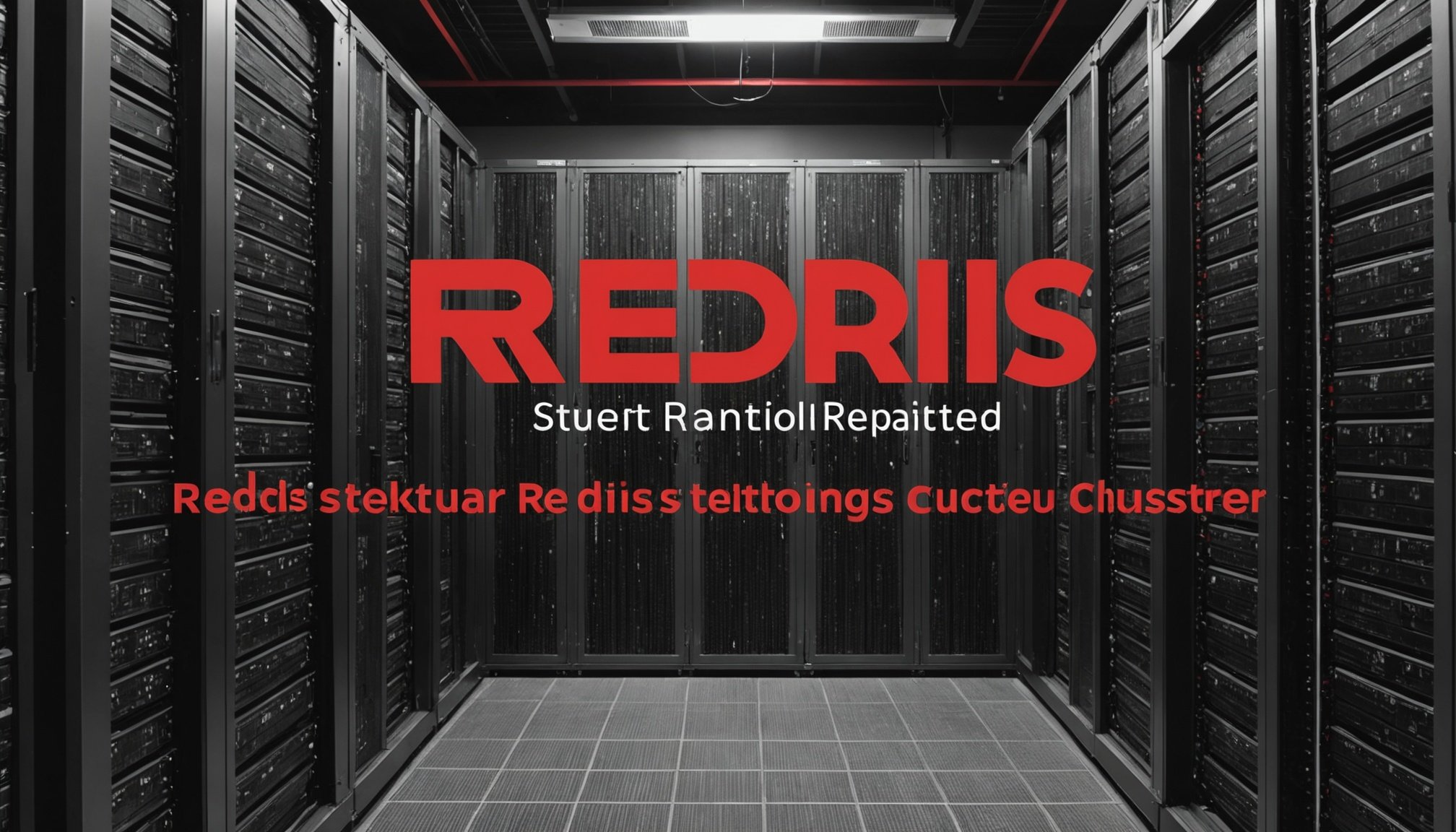Setting up a high-availability Redis cluster with Redis Sentinel enhances performance and reliability. This guide walks you through each essential step, ensuring your data remains accessible even in the face of failures. With clear instructions and key insights, you'll gain a deeper understanding of configuration options and best practices. Let's simplify the setup process and empower your database management with effective strategies tailored for both newcomers and seasoned developers.
Prerequisites for Setting Up a High-Availability Redis Cluster
Before diving into the setup of a high-availability Redis cluster, understanding the Redis architecture is crucial. Redis operates as an in-memory data structure store, often used as a database, cache, and message broker. Its architecture is designed for speed and efficiency, making it ideal for applications requiring quick data access.
In the same genre : Mastering Multicloud Management: Utilizing CloudFormation StackSets Across Multiple AWS Accounts
Redis Sentinel and Its Role
Redis Sentinel plays a vital role in ensuring the high availability of a Redis cluster. It provides monitoring, notification, and automatic failover capabilities. When setting up a Redis cluster, it's essential to meet the Redis Sentinel requirements to maintain a robust and reliable system.
System Requirements
To set up a Redis cluster, ensure your system meets the following prerequisites:
In the same genre : Unlocking Seamless Integration: Harnessing Azure Logic Apps to Connect Diverse Cloud Services
- Operating System: Linux distributions like Ubuntu or CentOS are preferred.
- Memory: Adequate memory is necessary, as Redis stores data in memory.
- Network: Reliable network connectivity is crucial for cluster communication.
Software Installations
Install the latest version of Redis and configure it according to your needs. Ensure that Redis Sentinel is also installed and configured to manage the cluster effectively. Proper configuration of these components will help maintain a high-availability environment, minimizing downtime and ensuring data integrity.
Step-by-Step Guide to Configuring Redis Cluster
Setting up a high-availability Redis cluster requires careful planning and execution. Below, we outline the key Redis configuration steps to ensure a robust and efficient Redis cluster setup.
Initial Configuration of Redis Instances
Before enabling cluster mode, each Redis instance must be correctly configured. Begin by editing the redis.conf file for each instance. Set the bind directive to your server's IP address and ensure protected-mode is set to no. This allows external connections, which are crucial for cluster communication. Additionally, configure the port for each instance, ensuring no conflicts.
Enabling Cluster Mode
To enable cluster mode, modify the redis.conf file again. Set cluster-enabled to yes, and specify the cluster-config-file to store cluster node information. This file is essential for maintaining cluster state and ensuring high-availability Redis operations. Finally, set cluster-node-timeout to define the maximum time a node can be unreachable before being considered failed.
Creating a Cluster with Redis CLI
Once the initial setup is complete, use the Redis CLI to create the cluster. Execute the redis-cli --cluster create command, followed by the IP addresses and ports of all instances. Assign roles using the --cluster-replicas option to specify master and slave nodes. This step finalises the Redis cluster setup, ensuring a balanced distribution of data and redundancy.
Configuring Redis Sentinel for High Availability
Redis Sentinel is pivotal in maintaining the high availability of a Redis cluster. Its primary functions include monitoring Redis instances, sending notifications, and managing automatic failovers. Proper Sentinel configuration is essential to ensure these features work seamlessly.
Detailed Configuration of Sentinel Instances
To begin the Redis Sentinel setup, configure each Sentinel instance by editing the sentinel.conf file. Specify the sentinel monitor directive, followed by the name of the master, the master’s IP address, port, and quorum. The quorum determines how many Sentinels must agree before a failover occurs. Adjust the sentinel down-after-milliseconds setting to define how long a master must be unreachable before being considered down. This ensures timely detection of failures.
Instructions for Setting Up Monitoring and Failover
For effective monitoring, ensure that each Sentinel instance is aware of all Redis nodes. Use the sentinel auth-pass directive to provide the password for authenticated connections if security is enabled. To configure failover, set the sentinel failover-timeout to control how long a failover process can take. This setting is crucial to prevent prolonged downtime. By following these steps, you can ensure that Redis Sentinel effectively manages the cluster's high availability.
Deploying the Redis Cluster with Sentinel
Deploying a Redis cluster with Sentinel involves several strategies to ensure a seamless and efficient setup. A common approach is using Docker for containerization, which simplifies the management and scaling of Redis instances. By encapsulating Redis nodes within Docker containers, you can streamline the deployment process, ensuring consistency across environments.
For those leveraging cloud services, platforms like AWS or Google Cloud offer managed Redis services, reducing the overhead of manual configuration. These services often include built-in Redis Sentinel support, providing automatic failover and monitoring capabilities, essential for maintaining high availability.
Example Deployment Scenarios
Consider a scenario where a business requires a highly available Redis cluster across multiple data centres. In this case, deploying Redis instances in each location and configuring Sentinel for cross-region failover ensures data redundancy and minimal downtime.
Best Practices for Deploying Redis Clusters
- Network Configuration: Ensure low-latency connections between Redis nodes.
- Resource Allocation: Allocate sufficient memory and CPU to handle peak loads.
- Security Measures: Implement authentication and encryption to protect data integrity.
By following these best practices and leveraging appropriate Redis deployment strategies, you can achieve a robust and scalable Redis cluster setup.
Performance Considerations for Redis Clusters
When aiming for optimal Redis cluster performance, several factors must be considered. The efficiency of a Redis setup can be influenced by hardware specifications, network latency, and configuration settings. Understanding these elements is crucial for effective Redis performance tuning.
Factors Affecting Redis Performance
Redis performance is primarily affected by the CPU, memory, and network bandwidth. A high-performance Redis cluster relies on fast processors and ample RAM to handle in-memory data operations efficiently. Network latency can also impact performance, especially in distributed environments. Thus, minimizing latency through network optimization is vital.
Tips for Optimizing Redis Configurations
To enhance Redis cluster performance, consider these strategies:
- Maximize Memory Usage: Ensure sufficient RAM to store all data in memory, preventing disk I/O.
- Optimize Data Structures: Use appropriate data types to reduce memory consumption and improve access speed.
- Tune Configuration Settings: Adjust
maxmemory-policyandtimeoutsettings to better manage resources.
Monitoring Performance Metrics and Tools
Monitoring tools are indispensable for Redis performance tuning. Tools like Redis Monitoring (RM) and RedisInsight provide insights into key metrics such as latency, throughput, and memory usage. Regular monitoring helps identify bottlenecks and allows for timely adjustments, ensuring consistent and optimized Redis operations.
Troubleshooting Common Issues
Navigating Redis troubleshooting can be challenging, especially when encountering common Redis issues. Identifying these problems early is crucial for maintaining a stable cluster environment.
Identifying Common Redis Issues
Common Redis issues often include connection errors, memory exhaustion, and slow query performance. Connection errors usually arise from misconfigured network settings or insufficient resources. To resolve these, verify network configurations and ensure adequate memory and CPU allocation.
Sentinel-Related Problems and Solutions
Redis Sentinel errors can disrupt high availability. Problems such as incorrect failover or Sentinel not detecting node status are prevalent. To address these, check the sentinel.conf for correct master and quorum settings. Ensure that all Sentinel instances can communicate with each other and the Redis nodes. Adjust sentinel down-after-milliseconds to improve failure detection accuracy.
Resources for Troubleshooting Redis
For effective Redis troubleshooting, leverage tools like RedisInsight for monitoring and diagnostics. The Redis community forums and official documentation provide valuable insights and solutions. Regularly updating Redis and Sentinel to the latest versions can also prevent many common Redis issues. By being proactive and utilizing these resources, you can maintain an efficient and reliable Redis cluster.
Frequently Asked Questions
When exploring Redis setups, users often have queries about configurations and best practices. Here, we address some of the most common Redis FAQ to help clarify these topics.
Redis Sentinel Questions
One frequent question involves the role of Redis Sentinel in a cluster. Redis Sentinel is crucial for monitoring and ensuring high availability by managing failovers. It automatically detects failures and promotes a replica to master, minimizing downtime. Users often ask how many Sentinel instances are needed. The answer is at least three, to ensure a majority can make decisions during failovers.
Redis Cluster Queries
Another common query is about the number of nodes required for a Redis cluster. A minimum of six nodes is recommended—three masters and three replicas—to ensure data redundancy and high availability. Users also inquire about the configuration of cluster-enabled settings, which must be set to yes in the redis.conf file to activate cluster mode.
Additional Resources
For further assistance, the official Redis documentation provides comprehensive guides. Community forums are also valuable for troubleshooting and sharing experiences. While these resources offer extensive insights, always ensure your setup aligns with best practices for optimal performance.











